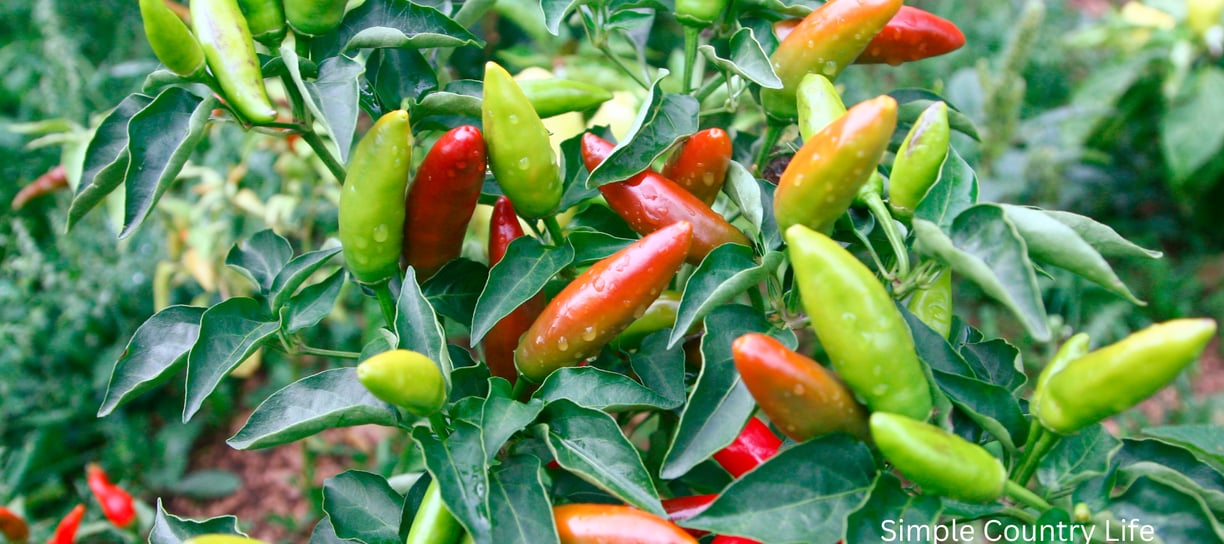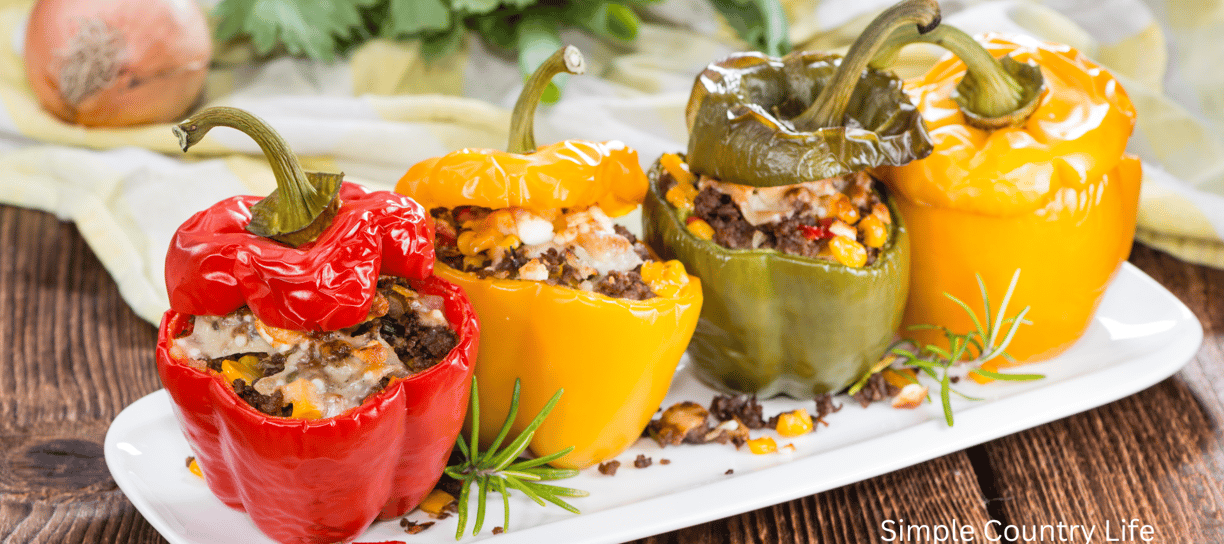Grow the Perfect Patio Peppers
This guide on how to grow patio pepper plants will help you turn your back porch into a thriving garden. Can you grow vegetables on a patio? Yes you can and I will show you how!
DO PEPPERS GROW WELL IN POTS?
Pepper plants grow quite well in containers as long as you include a few key factors.
Use the right sized container.
Be sure there is plenty of drainage.
Use soil that is good for the container as well as the plant.
If you are not quire sure what is the best container and how to plant and grow peppers on your patio, no worries we will cover each area so by the end of this article you will have all the information you need to get growing!
Here are some options to help you decide
If you are repurposing a container, make sure to add enough drainage to the bottom. You can do this with a drill or a hammer and nail, making holes in the base to allow any excess water to flow out. Roots that sit in damp to wet soil continuously will rot, damaging the plant’s health. This is why drainage is an important step you will not want to skip.


CHOOSE THE BEST SIZED CONTAINER
The size of the container will depend on the pepper plant you are growing. Let’s look at a few of the most common varieties.
BELL PEPPERS
Bell Peppers are the most commonly known pepper and will need a container close to 10 gallons or are at least 12 inches wide. If you plant in a container that is too small, your plant will still grow, but it will not be as productive as it would in a larger pot.
CHILI PEPPERS
Chilis will do well in a 12-inch wide container that is 5-7 gallons. If you are growing a larger variety, you will want to increase the size to 10-15 gallons or more, whereas draw peppers only need a 2-gallon pot.
HUNGARIAN WAX PEPPERS
These peppers need a wider container, about 16 inches, with 24 inches recommended by some gardeners.
JALAPEÑOS
Jalapeño peppers do best in a medium-sized pot that is about 3-5 gallons and 12 inches in diameter.
HOW TO PLANT PATIO PEPPERS
When it comes to planting, the same rules apply no matter what garden setup you are using.
SOIL
Fill your container with organic potting mix. If you have never worked with this mix before, it is very lightweight and fluffy. Fill the container being sure to leave room for the plant. As things settle you will want to add more soil as needed.
SEEDS
If you want to use seeds, it is best to start them indoors so you can plant seedlings in the spring. Start seeds about 8-10 weeks before the last frost date where you live. Plant seed using peat pods and keep them under a grow light.
SEEDLINGS
To plant seedlings, make a hole in the container larger than the plant’s root bulb. Using your hands, gently break up the roots and place the plant in the soil. Add soil around the plant and gently tamp it down with your hands. Water and add more soil if needed.
SUN
Your plants will need about 6-8 hours of sun a day. This is one of the advantages of growing in containers. If the area you have chosen does not get enough sun for growing, you can move the container to an area that does.
WATER
Because of the container you will need to water more often than a traditional garden, about every 2-3 days.
SUPPORT
Pepper plants can get loaded quickly, and for that reason, you will want to give them support. I like to use tomato cages mainly because we have so many lying around from years of gardening. You can also use a stake or a thin tree branch.


THINGS TO WATCH FOR WITH PATIO PEPPERS
I find there are fewer issues health wise when growing in containers because each year there is a fresh batch of soil to grow in. However, there are a few things you will still want to watch out for.
UNDER FED PLANTS
If you have pale leaves and little new growth on your plant, you may need to feed your peppers to get them back on track. You can use water-soluble plant food adding it every week or so.
BLOSSOM-END ROT
If you have a calcium deficiency, you will see a yellow or light green spot on the pepper that can turn black. You can add calcium like eggshells or bone meal.
OVERWATERING
Peppers love water but too much can affect yields. The trick is to be consistent throughout. The best way is to make a watering routine for your containers, being sure to check the soil of each plant before watering.
HARVESTING PATIO PEPPERS
The timing for harvesting when you grow in containers will be similar to a traditional garden and that timing will all depend on where you live. In Pennsylvania, our harvests usually begin in August lasting until September.
SIGNS A PEPPER IS READY TO PICK:
Look for good color. Most peppers start out green and then turn colors as they ripen.
Jalapeños are ready when they are about 3-4 inches long and are a deep green.
Hungarian wax peppers are ready to pick when they have a smooth, waxy look and are about 5 inches long.
Chilis are different, meaning you will need to try one for taste to know if it is ready to pick. You want no bitterness and to have some heat.
Once you harvest your peppers, they will last 1-2 weeks in the refrigerator. You can place them in a paper bag to keep them from getting soft.
HOW TO PRESERVE PEPPERS
Wash and dry peppers.
Remove any belmishes.
Remove the stem and core.
Dice to a size you routine use.Put diced peppers onto a cookie sheet.
Part freeze for about 20 minutes.
Remove from the freezer and place immedidately into freezer bags.
label and freeze flat.
Frozen peppers will last 8-12 months in the freezer. Diced peppers can be used in omelets, soups, stir-fries, and any cooked recipe. Once thawed, frozen peppers get mushy, so they are not good to eat raw from the freezer.
Make sure you take the time to research your local laws and regulations before getting started with homesteading. This will ensure that you are compliant with any zoning, building guidelines, or other restrictions in your area.
Being prepared for any issues will help you to feel more secure day to day.
Starting a homestead is an exciting journey even if it does seem overwhelming at times. Make a list of the tasks you need to complete in each area so you can better create a setup before you bring any animals home.
With the right preparation, planning, and research, you can get started on your homesteading journey with excitement and confidence.
I hope you found this blog of interest?
PLEASE FOLLOW US AT OUR YOUTUBE CHANNEL, PINTEREST, INSTAGRAM AND TIKTOK
